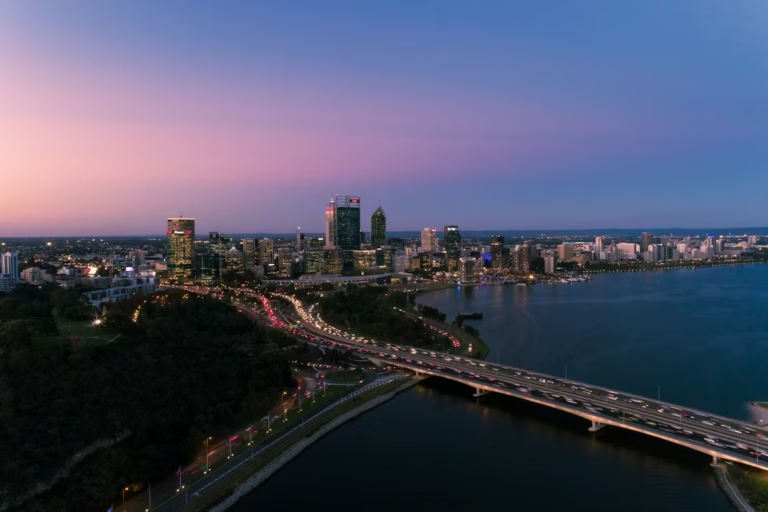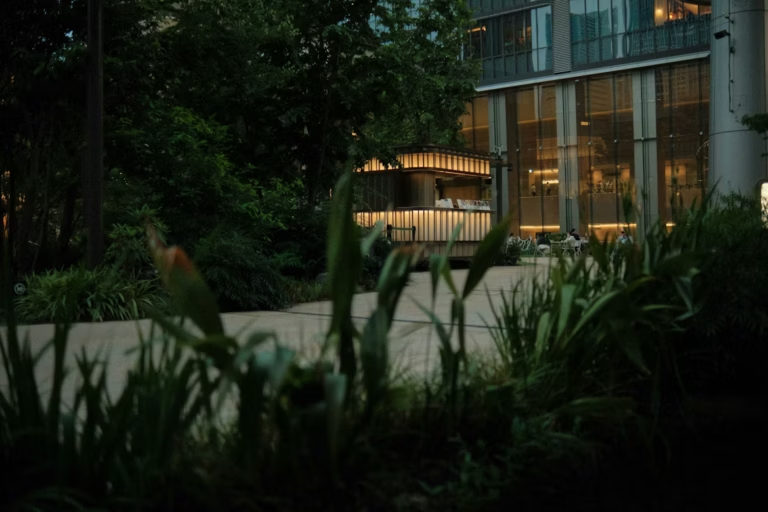In today’s interconnected and technologically dependent world, critical infrastructure protection has become an essential part of national security and economic stability. Critical infrastructure refers to the systems, assets, and networks that are vital to the functioning of a nation’s economy, security, public health, and safety.
In Australia, the security of critical infrastructure is paramount, as disruptions or attacks on these systems can have severe and far-reaching consequences.
From power grids and water supplies to transportation networks and telecommunications, critical infrastructure is the backbone of modern society. Ensuring that these systems are protected from physical threats, sabotage, and natural disasters is a key responsibility for both government agencies and private sector operators.
At Smartsec Security Solutions, we specialise in critical infrastructure protection with a focus on physical security, helping businesses and public entities mitigate risks and safeguard their essential assets.
What is Critical Infrastructure Protection?
Critical infrastructure protection (CIP) refers to the strategies, policies, and systems put in place to defend the essential physical and digital networks that are crucial for a nation’s economy, security, and public health. These systems include everything from power plants and water distribution networks to healthcare facilities and telecommunications infrastructure. Disruptions to any of these critical sectors can lead to economic losses, public safety risks, and compromised national security.
Australia has implemented a range of regulations and frameworks to protect critical infrastructure, most notably through the Security of Critical Infrastructure Act (SOCI). This legislation establishes mandatory requirements for the protection of critical infrastructure across various sectors, with a focus on managing security risks and ensuring that infrastructure is resilient against both physical and cyber threats.
The key sectors identified as critical infrastructure include:
- Energy: Power generation, transmission, and distribution systems.
- Water and Wastewater: Water treatment, distribution, and sanitation systems.
- Communications: Telecommunications networks, data centres, and information technology infrastructure.
- Transportation: Airports, seaports, rail, and road networks.
- Healthcare: Hospitals, medical facilities, and health services.
- Food and Agriculture: Food processing, distribution, and storage facilities.
- Financial Services: Banks, financial institutions, and payment systems.
Why Critical Infrastructure Protection is Crucial
The importance of critical infrastructure protection cannot be overstated. These systems underpin daily life, from ensuring that electricity powers homes and businesses to enabling the flow of clean water and maintaining public transportation. A failure or attack on any of these systems could have catastrophic consequences, including:
- Economic Disruption: A significant disruption to critical infrastructure, such as an attack on a power grid or water supply, could cripple businesses and industries, leading to massive economic losses.
- Public Safety Risks: Disruptions to essential services, such as healthcare or transport networks, could endanger lives by delaying emergency responses or cutting off access to vital resources.
- National Security Threats: Critical infrastructure is often a target for terrorist attacks or sabotage aimed at undermining national security. Protecting these systems is essential to maintaining the security of the nation.
- Operational Downtime: For businesses that operate or depend on critical infrastructure, downtime caused by physical security incidents can result in lost revenue, operational delays, and reputational damage.
Given the increasing sophistication of threats—ranging from cyberattacks to physical sabotage—there is a growing need for comprehensive critical infrastructure protection strategies that address both physical and digital vulnerabilities.
Key Elements of Critical Infrastructure Protection
Effective critical infrastructure protection requires a multi-faceted approach that addresses physical security, cyber threats, and operational resilience. At Smartsec Security Solutions, we focus on providing tailored physical security consulting to ensure that critical infrastructure is protected from physical threats, such as unauthorised access, sabotage, or natural disasters. Here are the key components of our approach:
1. Physical Security Risk Assessments
The first step in protecting critical infrastructure is identifying and assessing potential vulnerabilities. Our consultants conduct detailed physical security risk assessments that help organisations understand where their physical assets may be at risk and what measures are needed to secure them.
Our assessments cover:
- Access Control Systems: We assess how well your organisation manages access to critical infrastructure sites, identifying gaps in access control systems and recommending improvements to prevent unauthorised entry.
- Perimeter Security: We evaluate the effectiveness of fencing, gates, barriers, and lighting to ensure that the physical boundaries of your facility are secure against intruders.
- Surveillance and Monitoring: We review the coverage and functionality of CCTV systems, ensuring that all critical areas are monitored and that surveillance footage can be used for real-time incident response or post-incident analysis.
- Asset Protection: We assess the security of key infrastructure assets—such as power transformers, pipelines, or communication towers—to ensure they are protected from theft, sabotage, or vandalism.
2. Designing and Implementing Security Solutions
Based on the findings of our risk assessments, we work with organisations to design and implement physical security solutions tailored to their specific needs. Our goal is to provide practical, cost-effective solutions that enhance the protection of critical infrastructure without disrupting operations.
Key services include:
- Access Control Systems: We help design or upgrade access control solutions, including keycard entry systems, biometric access controls, and PIN-based systems to ensure that only authorised personnel can access sensitive areas.
- CCTV and Surveillance Systems: Our consultants assist in designing and optimising surveillance systems that provide full coverage of high-risk areas. We ensure that cameras are strategically placed to monitor key entry points, perimeters, and critical assets.
- Perimeter Security Solutions: We design perimeter security systems that include physical barriers, gates, and lighting to protect infrastructure sites from unauthorised access and external threats.
- Intrusion Detection Systems: We recommend and implement alarm systems, motion sensors, and other intrusion detection technologies that alert security teams to potential breaches in real time.
3. Incident Response Planning
An effective incident response plan is crucial for minimising the impact of security breaches on critical infrastructure. At Smartsec Security Solutions, we help organisations develop robust incident response plans that ensure a quick and coordinated response to any security incidents, such as physical intrusions, sabotage, or natural disasters.
Our incident response planning includes:
- Crisis Management Protocols: We work with organisations to develop step-by-step protocols for handling security incidents, ensuring that staff know how to respond quickly and effectively.
- Evacuation Procedures: We help design evacuation plans that prioritise the safety of personnel and minimise disruption to operations in the event of an emergency.
- Communication Strategies: Effective communication during a security incident is essential for maintaining control and ensuring the safety of staff and the public. We help develop crisis communication plans that ensure a coordinated response between security teams, management, and emergency services.
- Post-Incident Recovery: After a security incident, quick recovery is essential to minimising downtime and restoring normal operations. We help develop recovery procedures that ensure critical infrastructure can return to full functionality as soon as possible.
4. Ongoing Monitoring and Security Audits
The security landscape is constantly evolving, and critical infrastructure must be able to adapt to new and emerging threats. At Smartsec Security Solutions, we offer ongoing monitoring and security audit services to ensure that physical security measures remain effective over time.
Our services include:
- Regular Security Audits: We conduct regular audits of physical security systems to identify potential weaknesses and recommend adjustments as needed.
- System Upgrades: As new technologies become available, we provide advice on upgrading security systems to ensure that they continue to meet industry standards and effectively protect critical assets.
- Compliance Reporting: We help organisations maintain compliance with regulatory frameworks, such as the Security of Critical Infrastructure (SOCI) Act, by conducting compliance reviews and preparing necessary documentation.
Industries We Serve
At Smartsec Security Solutions, we provide critical infrastructure protection services to a wide range of industries, each with its own unique security challenges. Here are some of the industries we serve:
1. Energy
Energy infrastructure—including power plants, transmission lines, and substations—are high-value targets for sabotage or theft. We help energy providers implement robust physical security measures to protect these vital assets from attack.
2. Transportation
Airports, seaports, railways, and road networks are critical to the movement of people and goods. We provide tailored security solutions to protect transportation hubs from unauthorised access and ensure the safe and efficient operation of transport infrastructure.
3. Water and Wastewater
Water treatment plants and distribution networks are essential for public health and safety. We assist water utilities in protecting these critical systems from physical threats, such as sabotage or contamination.
4. Telecommunications
Telecommunications infrastructure—including data centres, cell towers, and fibre optic networks—is critical for maintaining communications. We help telecom providers safeguard their infrastructure from physical attacks and ensure uninterrupted service.
5. Healthcare
Hospitals and healthcare facilities are critical to public health, and any disruption to their operations can have serious consequences. We provide security solutions to protect medical infrastructure from theft, vandalism, or attack.
Why Choose Smartsec Security Solutions?
At Smartsec Security Solutions, we specialise in critical infrastructure protection, offering independent, unbiased physical security consulting services. We focus solely on what’s best for your organisation, without trying to sell hardware or systems that may not be necessary.
Our experienced consultants work closely with your team to assess risks, design tailored security solutions, and ensure the long-term protection of your critical assets.
Feel Free to Reach Out
If your organisation is responsible for critical infrastructure and you’re looking for expert guidance on enhancing your physical security measures, contact Smartsec Security Solutions today. Our experienced consultants are ready to assess your risks, develop tailored recommendations, and help you safeguard your critical assets.
Visit our Services page to learn more about how we can help you protect your infrastructure from physical threats.



